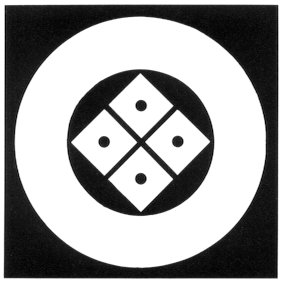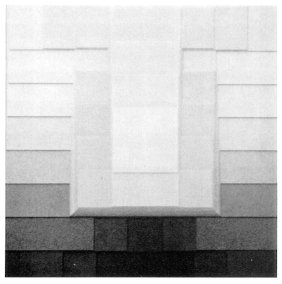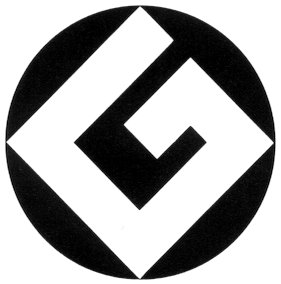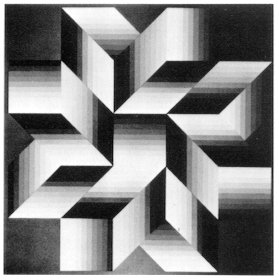|
(6) Balanced arrangement Symmetry Bilateral symmetry lacks movement. But it has stability and balance. If sensitivity added, you can sufficiently put it to practical use. (For example, Japanese crests, the national flags, traffic-control signs, company marks, and so on.) Though these lack movement and a touch of solidity, and there is no more in these than is found in a plane surface, these have a clear strength of shape. The static, settled beauty seen in these shapes is called symmetrical beauty, in contrast with balanced beauty stated in the following paragraph. · Figure 139 is a kind of the marks stated before, but it has more movement. It comes from the oblique structure which is dominant and makes asymmetry. Similarly, there is movement and a feeling of three dimensions in Figure 141, compared with Figure 140, a simple work of bilateral symmetry. The reason for this is not only that each shape is figured as solid but that the picture has a KOHSEI (Basic Art & Design) of revolving symmetry. But these characteristics are recognized only in contrast to the above Figure 140. On the whole, the picture has a well balanced, settled KOHSEI (Basic Art & Design). Precisely it is not mirror-reflected symmetry, though similar situations are clearly found both in the horizontal and vertical directions. In the layout of type, the centering arrangements,
which are mirror-reflecting symmetry, are frequently used for greeting
cards and letters on which you need to express solemnity and majesty. This
creates the grace and dignity this medium, symmetrical KOHSEI (Basic
Art & Design), has.
Figure 142 is a type setting
sample of an invitation card informing a wedding ceremony at church.
|



